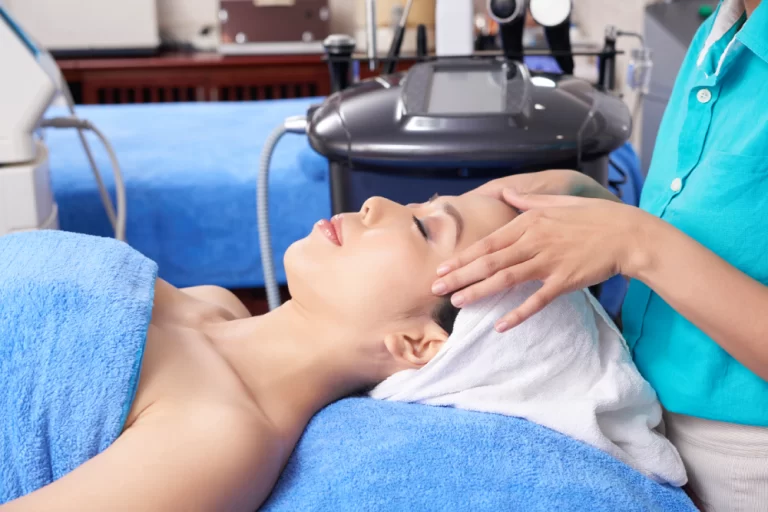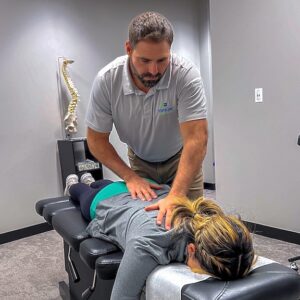Have you ever wondered how a non-invasive therapy could potentially enhance your body’s natural ability to heal itself?
Take, for instance, a hypothetical scenario where an athlete sustains a severe sports injury. In this deep dive, we will explore the fascinating world of soft wave therapy and how it has emerged as a promising technique to boost the body’s healing process.
By delving into the science behind this innovative therapy and uncovering its various applications, you will gain insights into its potential benefits for sports injuries, chronic pain management, wound healing, arthritis relief, and even neurological disorders.
Join us on this journey as we uncover the secrets behind soft wave therapy and its potential impact on your health and well-being.
Understanding Soft Wave Therapy
If you want to understand soft wave therapy, you will need to grasp the basic principles behind this natural healing technique. Soft wave therapy is a type of therapy that promotes the body’s natural healing process. It involves the use of low-intensity sound waves to stimulate the body’s tissues and improve blood flow. By doing so, soft wave therapy can aid in the repair of damaged tissues, reduce inflammation, and relieve pain.
One of the key aspects of understanding soft wave therapy is recognizing its ability to target specific areas of the body. Unlike other forms of therapy, soft wave therapy can be focused on a particular region, allowing for precise treatment. This targeted approach enhances the therapy’s effectiveness and helps to achieve optimal results.
Soft wave therapy works by delivering sound waves deep into the body’s tissues. These waves penetrate the skin and reach the underlying structures, such as muscles, tendons, and ligaments. Once there, the waves stimulate the production of collagen, a protein that plays a crucial role in tissue repair and regeneration. Additionally, soft wave therapy also promotes the release of nitric oxide, a molecule that dilates blood vessels and improves circulation.
The Science Behind Soft Wave Therapy
Soft wave therapy harnesses the power of low-intensity sound waves to stimulate tissue repair and promote natural healing in the body. This innovative therapy has gained popularity in the fields of health, fitness, and wellness due to its potential benefits. The science behind soft wave therapy lies in its ability to enhance the body’s natural healing mechanisms.
When soft wave therapy is applied to an injured area, the low-intensity sound waves penetrate deep into the tissues. These waves stimulate the production of growth factors, which are essential for tissue repair and regeneration. Additionally, soft wave therapy improves blood circulation, delivering oxygen and nutrients to the affected area, further aiding the healing process.
The therapeutic effects of soft wave therapy aren’t limited to physical injuries. It has also shown promising results in promoting overall wellness and relieving chronic pain. By stimulating the body’s natural healing response, soft wave therapy can help alleviate symptoms associated with various health conditions.
Furthermore, soft wave therapy is a non-invasive and drug-free treatment option, making it a safe choice for individuals seeking alternative healing methods. It’s often used as a complement to other treatments or as a standalone therapy.
How Soft Wave Therapy Accelerates Healing
To understand how soft wave therapy accelerates healing, it’s important to recognize its direct impact on the body’s natural repair processes. Soft wave therapy, also known as extracorporeal shockwave therapy (ESWT), stimulates the body’s healing mechanisms by promoting increased blood flow and tissue regeneration. When the soft waves are delivered to the affected area, they create microtrauma within the tissues, triggering an immune response and activating the body’s healing cascade.
The soft waves used in this therapy help accelerate healing by increasing the production of growth factors, such as vascular endothelial growth factor (VEGF), fibroblast growth factor (FGF), and transforming growth factor-beta (TGF-β). These growth factors play a crucial role in angiogenesis, collagen synthesis, and tissue regeneration, which are essential for the healing process. By promoting the release of these growth factors, soft wave therapy stimulates the body’s natural healing processes, enabling faster recovery and tissue repair.
Furthermore, soft wave therapy also helps improve the metabolism of injured tissues, enhancing the delivery of nutrients and oxygen to the affected area. This increased metabolic activity aids in the removal of waste products, such as lactic acid, and promotes tissue regeneration. As a result, soft wave therapy not only accelerates healing but also reduces pain and inflammation, allowing individuals to resume their daily activities more quickly.
Benefits of Soft Wave Therapy for Sports Injuries
Soft wave therapy offers a range of benefits for individuals dealing with sports injuries. Whether you’re an athlete or someone who enjoys staying active, sports injuries can be a major setback. Soft wave therapy can help you get back on track by accelerating your body’s natural healing process.
One of the key benefits of soft wave therapy is pain relief. Sports injuries often come with a lot of pain and discomfort, making it difficult to carry out daily activities. Soft wave therapy uses low-intensity acoustic waves to stimulate blood flow, promote tissue repair, and reduce pain. By targeting the injured area, these waves help to alleviate pain and improve your overall comfort.
Another advantage of soft wave therapy is its ability to enhance the healing process. The acoustic waves break down scar tissue and stimulate the production of collagen, a protein that aids in tissue regeneration. This promotes faster healing and helps to restore the injured area to its pre-injury state.
Additionally, soft wave therapy can improve range of motion and mobility. Sports injuries can limit your ability to move freely, affecting your performance and quality of life. Through its regenerative effects, soft wave therapy can help to increase flexibility and restore proper joint function, allowing you to regain your mobility and get back to doing what you love.
Soft Wave Therapy for Chronic Pain Management
Dealing with chronic pain can be a persistent challenge, especially for those who’ve previously benefited from soft wave therapy for sports injuries. However, the good news is that soft wave therapy can also be used for chronic pain management. This non-invasive and drug-free treatment option has shown promising results in reducing pain and improving quality of life.
Soft wave therapy works by delivering low-intensity sound waves to the affected area, stimulating the body’s natural healing process. These sound waves promote blood flow, increase the production of collagen, and reduce inflammation, ultimately relieving pain. The therapy can be used to treat various chronic pain conditions, including arthritis, fibromyalgia, and back pain.
One of the advantages of soft wave therapy for chronic pain management is its ability to provide long-lasting relief. Unlike medications that only offer temporary relief, soft wave therapy targets the underlying cause of the pain, addressing it at its source. With regular treatment sessions, patients can experience significant and lasting pain reduction.
Furthermore, soft wave therapy near me is a safe and well-tolerated treatment option. It doesn’t involve any surgery or medication, minimizing the risk of side effects. The procedure is typically performed in a clinical setting and is relatively quick and painless.
Soft Wave Therapy for Joint and Muscle Conditions
Soft wave therapy offers effective treatment for joint and muscle conditions, providing relief and promoting natural healing. Whether you’re dealing with arthritis, tendonitis, or a muscle strain, soft wave therapy can help alleviate your pain and improve your overall function.
When it comes to joint conditions like osteoarthritis, soft wave therapy has shown promising results in reducing pain and inflammation. The high-energy acoustic waves delivered during the treatment stimulate blood flow and promote the growth of new blood vessels, which can enhance the body’s natural healing process. This therapy also helps to break down calcium deposits and scar tissue, improving joint mobility and reducing stiffness.
Muscle conditions such as tendonitis and muscle strains can be debilitating and hinder your daily activities. Soft wave therapy targets these issues by promoting the regeneration of damaged tissues and reducing inflammation. The acoustic waves stimulate the release of growth factors, which accelerate tissue repair and promote the formation of new, healthy muscle fibers. This can lead to faster recovery times and improved muscle function.
Soft wave therapy is a non-invasive and drug-free treatment option that can be used alongside other therapies or as a standalone treatment. It’s well-tolerated by most patients and offers long-lasting results.
Soft Wave Therapy for Wound Healing
If you’re seeking natural healing for wounds, soft wave therapy offers a promising solution by promoting tissue regeneration and supporting the body’s healing process. Soft wave therapy, also known as extracorporeal shockwave therapy (ESWT), has been used for years to treat various musculoskeletal conditions, but it has also shown significant potential in wound healing.
This non-invasive treatment involves the use of high-energy acoustic waves that are delivered to the affected area, stimulating the body’s natural healing response. Soft wave therapy works by increasing blood circulation to the wound site, which helps to deliver essential nutrients and oxygen to the damaged tissues. This improved blood flow also promotes the formation of new blood vessels, known as angiogenesis, which is crucial for the healing process.
Additionally, the acoustic waves stimulate the production of collagen, a protein responsible for tissue repair and regeneration. This helps to strengthen the wound and promote faster healing. Studies have shown that soft wave therapy can be effective in treating various types of wounds, including chronic wounds, diabetic ulcers, and pressure sores. It has been found to accelerate wound closure, reduce pain and inflammation, and improve overall wound healing outcomes.
The treatment is typically administered in multiple sessions, depending on the severity of the wound, and is usually well-tolerated with minimal side effects.
Soft Wave Therapy for Arthritis Relief
Soft wave therapy provides a promising solution for relieving arthritis, promoting pain reduction, and improving joint function. If you’re someone who suffers from arthritis, you know just how debilitating and painful it can be. Traditional treatments such as medication and physical therapy may provide temporary relief, but they may not address the underlying cause of the pain.
Soft wave therapy, on the other hand, offers a non-invasive and drug-free alternative that targets the root of the problem. By delivering low-intensity sound waves to the affected area, soft wave therapy stimulates the body’s natural healing process. These sound waves promote the growth of new blood vessels and enhance the production of collagen, which is essential for maintaining healthy joints. As a result, inflammation is reduced, pain is alleviated, and joint function is improved.
What makes soft wave therapy particularly appealing is its ability to provide long-lasting relief. Unlike some traditional treatments, the effects of soft wave therapy can be sustained over time, allowing individuals with arthritis to experience a better quality of life. It’s important to note that soft wave therapy is a safe and non-invasive procedure, making it suitable for individuals of all ages.
If you’re tired of living with the pain and limitations caused by arthritis, soft wave therapy may be the solution you have been searching for. Consult with a healthcare professional to determine if soft wave therapy is right for you and take the first step towards a pain-free and active lifestyle.
Exploring Soft Wave Therapy for Neurological Disorders
Living with arthritis can be debilitating, but soft wave therapy also holds promise for individuals with neurological disorders. Neurological disorders, such as Parkinson’s disease, multiple sclerosis, and stroke, can greatly impact a person’s quality of life. However, recent studies have shown that soft wave therapy can potentially provide relief and improve the symptoms associated with these disorders.
Soft wave therapy works by delivering low-intensity sound waves to targeted areas of the body. These sound waves stimulate cellular activity and promote the release of growth factors, which can help repair damaged tissues and reduce inflammation. In the case of neurological disorders, soft wave therapy has shown promise in improving motor function, reducing muscle spasticity, and enhancing overall mobility.
One study conducted on individuals with Parkinson’s disease found that soft wave therapy led to significant improvements in motor symptoms, such as tremors and rigidity. Another study demonstrated that soft wave therapy can help alleviate symptoms of multiple sclerosis, including fatigue, pain, and muscle weakness. Additionally, soft wave therapy has shown potential in aiding stroke recovery by promoting neuroplasticity and facilitating the regeneration of neural connections.
While more research is needed to fully understand the benefits of soft wave therapy for neurological disorders, the initial findings are promising. Incorporating soft wave therapy into the treatment plan for individuals with neurological disorders could potentially enhance their overall well-being and improve their quality of life.
The Future of Soft Wave Therapy in Medicine
Soft wave therapy continues to evolve and shows great promise as a groundbreaking medical treatment in various fields. The future of soft wave therapy in medicine holds immense potential for revolutionizing the way we approach healing and recovery.
One of the most exciting areas of development is in regenerative medicine. Soft wave therapy can stimulate the body’s natural healing mechanisms, promoting tissue regeneration and repair. This could lead to significant advancements in the treatment of chronic conditions such as osteoarthritis, tendinopathy, and musculoskeletal injuries.
Additionally, soft wave therapy is being explored as a non-invasive alternative to traditional surgical procedures. With its ability to enhance tissue healing and reduce pain and inflammation, soft wave therapy could potentially eliminate the need for invasive surgeries in certain cases. This wouldn’t only minimize risks and complications associated with surgery but also reduce recovery time and healthcare costs.
Furthermore, the future of soft wave therapy in medicine includes its potential application in the field of dermatology. Soft wave therapy has shown promising results in the treatment of various skin conditions, including acne, scars, and wrinkles. By stimulating collagen production and improving blood circulation, soft wave therapy could offer a safe and effective non-surgical option for individuals seeking skin rejuvenation.
In conclusion, soft wave therapy has shown great potential in boosting the body’s natural healing process.
Through its use in sports injuries, chronic pain management, wound healing, arthritis relief, and even neurological disorders, this innovative treatment has proven to be effective and beneficial.
As research and technology continue to advance, the future of soft wave therapy in medicine looks promising, offering new possibilities for improved healing and overall well-being.
Why Choose Us?
Embark on a journey of holistic well-being with Evolve Chiropractic of Lake Zurich. Our premier establishment is dedicated to providing cutting-edge soft wave therapy, a revolutionary approach to healing and rejuvenation. Our skilled chiropractors leverage state-of-the-art technology to deliver targeted, non-invasive treatment, promoting the natural healing processes of the body. At Evolve Chiropractic, we prioritize your health and wellness, offering personalized care to help you evolve toward a pain-free, revitalized life.
Evolve Chiropractic of Lake Zurich
275 S Rand Rd Ste a9, Lake Zurich, IL 60047
(224) 662-4732





